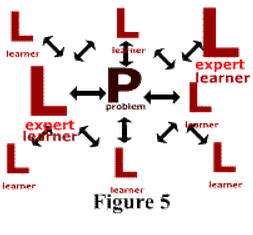Back from a visit to the optometrist--
Where an order was placed for new lenses--
Computer glasses -- "these will help you see more clearly at your computer"
Leaving the progressives for seeing at other times.
In front of my computer
Scanning #ccourses in Feedly,
Progressive Lenses -- wait-- what a coincidence
As Simon Ensor was optimistically and eloquently looking to the future through his progressive lenses
I am of the opinion that as new networked culture emerges we will inevitably need to reflect on the lenses which are appropriate. ...
I am optimistic that new emerging conditions will enable new lenses which will allow us to reconsider issues of dominance, of transactions between us.My new lenses offer greater clarity on what's to come enabling, through #ccourses reading, a novice understanding of possibilities for growing a truly authentic digital identity. When Bill Benzon suggested
The message is quite clear: build your own. No, not necessarily from scratch – whatever that means. But at least install your own Word Press instance, and even have your students do it – much as participants in this workshop had to set up their own blogs.and referenced
And that has, in fact, been a running theme throughout the workshop. Whatever course you are teaching or will be teaching, it is important to engage with the technology in an active way. If we treat the web as a big media server and passively consume text, videos, and music, we will become slaves of the web. We have to actively engage with the web, and setting up a blog is a good way to begin.
Simon Thomson’s vision of establishing an online identity in kindergarten, maintaining it into and through primary and secondary school, on into higher ed, and out through final graduation into life in general.with a link and description of Known
I began to think of pieces of my identity sprinkled around the web, much not readily available today --
And the import of the potential for me even now and especially today's learners --
These new lenses enabling an exciting perspective that compels more thinking and exploration--





